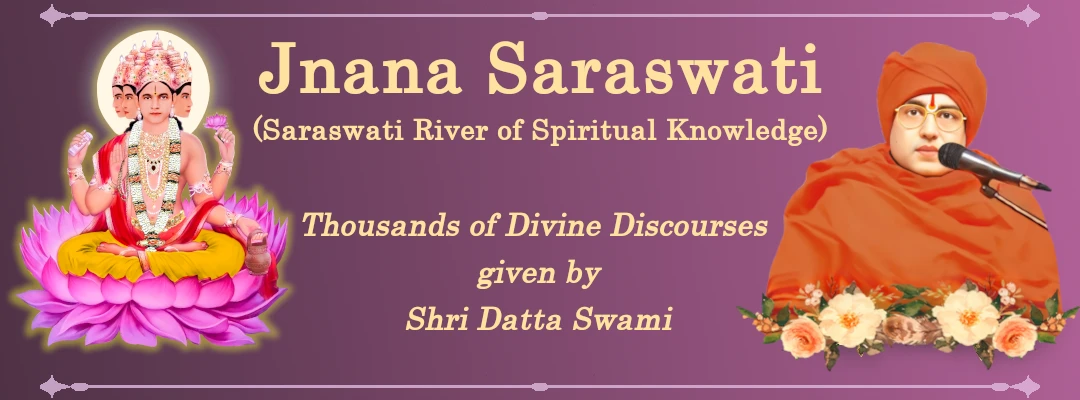
18 Jul 2024
[Prof. JSR Prasad asked:- Sāṣṭāṅga namaskāram Swami, Please explain the following Vedic statements - ‘Saṃvidā deyam, hriyā deyam, bhiyā deyam’]
Swami replied:-
i) ‘Deyam’ means to donate. What is to be donated to God? It can be practical sacrifice of service (Karma Samnyaasa) or it can be practical sacrifice of the fruit of work (Karma Phala Tyaaga). Both these steps constitute Karma Yoga or practical devotion.
ii) While doing the practical sacrifice of both service and fruit of work, you must know that the Sadguru or the receiver is God. Such knowledge is called ‘Samvit’. ‘Saṃvidā deyam’ means that you must sacrifice both service and fruit of work to the Sadguru or the contemporary human incarnation of God with the awareness of this precious knowledge (that He is God incarnated in human form). This is Jnaana Yoga or theoretical spiritual knowledge.

iii) Hriyā deyam – bhiyā deyam:- This means that while you are doing the above said practical sacrifice of fruit of your work to the contemporary human incarnation or Sadguru, you must do with shyness and fear because you are donating to God, who is not in need of anything from anybody. While donating your fruit of work to a beggar, you need not have shyness and fear because he is in need of your donation. God is omnipotent and is not in need of anything or anybody in this creation. Such feeling in your mind creates shyness and fear. Since a petty soul like you becomes the donor and that omnipotent God is becoming the receiver of your donation, the shyness and fear must appear in your heart naturally. In the case of King Bali, Bali did the donation with glory and pride instead of shyness and fear. Due to pride, he was suppressed downwards. But, he did the practical sacrifice even though his preacher or Guru told him that the receiver is God, who came to destroy him. For this merit, God became his gate keeper. This is impure theoretical devotion (Bhakti Yoga) mingled with pure practical devotion (Karma Yoga). The above three Vedic statements establish the path to reach the state of becoming very close to God. Such path consists of initial Jnaana Yoga (knowing the details of the personality of God completely along with the knowledge of the correct path to reach Him and along with the knowledge of self, which is that the soul is not God), then, Bhakti Yoga (theoretical devotion or inspiration to reach God), then, Karma Samnyaasa Yoga (donation of practical service to the Sadguru in any form needed along with propagation of His true and complete spiritual knowledge in the world) and then, Karma Phala Tyaaga Yoga (donating the fruit of your work or money as per your capacity and devotion). Therefore, these three Vedic statements reveal the complete details of the correct path to reach and become very close to God (Saayujyam) and sometimes to become incarnation if God wishes so (Kaivalyam).
The word ‘Deyam’ appears in every statement. This means that you must use your theoretical true and complete spiritual knowledge (Jnaana Yoga) that is already learnt and subsequent theoretical devotion generated (Bhakti Yoga) at the time of practical devotion (Karma Yoga), which consists of sacrifice of service in the form of work (Karma Samnyaasa) and sacrifice of fruit of work (Karma Phala Tyaaga). Without the association of Jnaana Yoga and Bhakti Yoga, if you mechanically do Karma Yoga (like mechanically doing service and sacrifice to a beggar without showing love), such Karma Yoga becomes a waste, especially when the receiver is the Sadguru or the contemporary human incarnation of God.
★ ★ ★ ★ ★